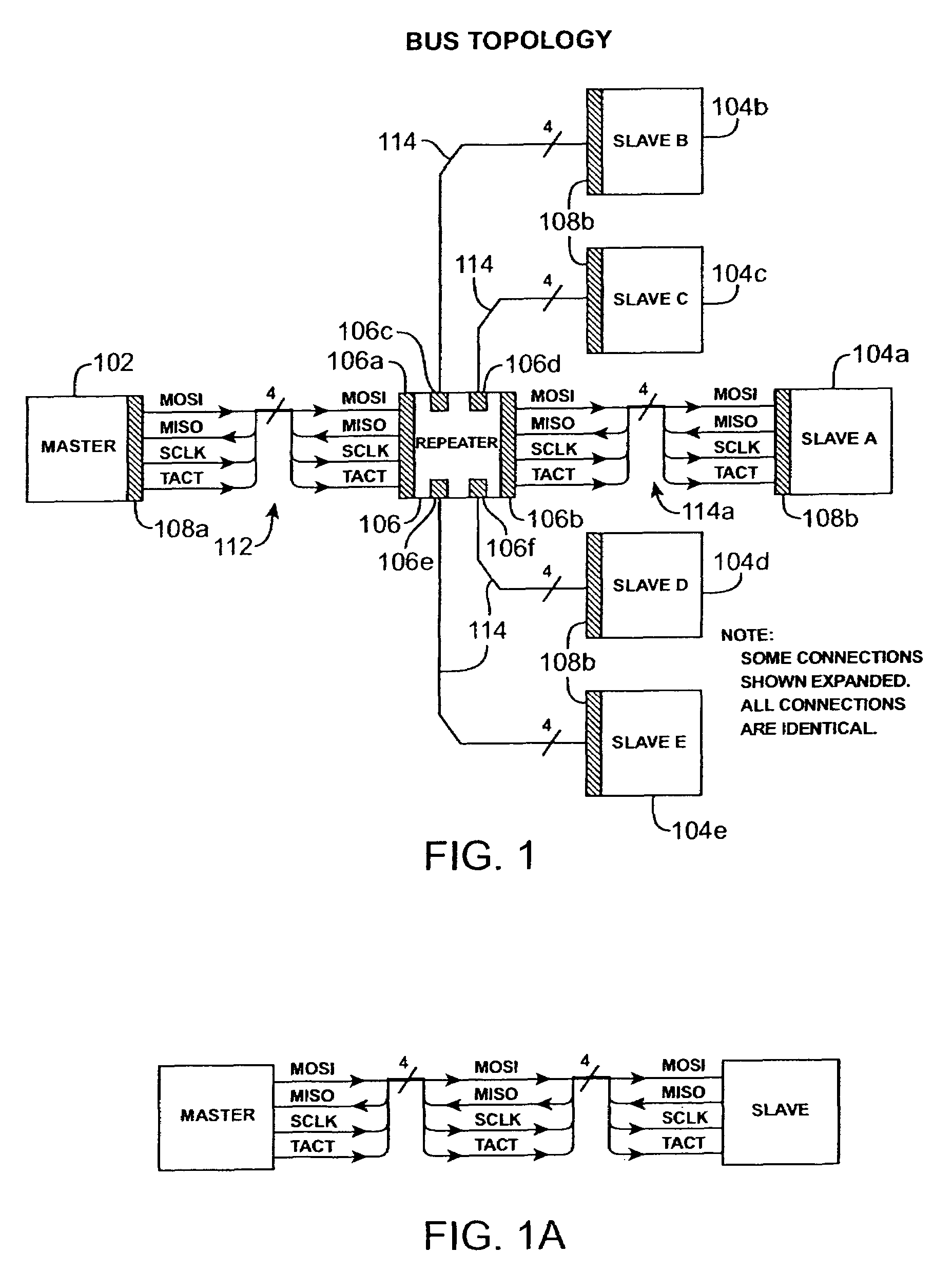Synchronous serial data communication bus
a serial data and bus technology, applied in the field of data communication, can solve the problems of asynchronous communication being relegated to slow speed devices, unable to guarantee that they will continue to agree over extended periods, etc., and achieve the effect of quick error detection and faster error recovery
- Summary
- Abstract
- Description
- Claims
- Application Information
AI Technical Summary
Benefits of technology
Problems solved by technology
Method used
Image
Examples
Embodiment Construction
[0022]FIG. 1 shows an illustrative configuration of an embodiment of a synchronous serial interface bus in accordance with the present invention. The synchronous serial interface bus allows 8, 16, or 32-bit data transfers between a single master 102 and each of one or more slaves, e.g. 104a, 104b, 104c, 104d, and 104e. The expanded views of the serial bus 112, 114a show the following four signal lines:[0023]1. Master Out / Slave In (MOSI) line, over which bus master transmits data to the slaves;[0024]2. Master In / Slave Out (MISO) line, over which the bus master receives data from the slaves;[0025]3. Clock (SCLK) line, carrying a continuous square wave provided by the master for clocking slave interfaces; and[0026]4. Transaction Active (TACT) line, driven by the master, indicating start, progress, and completion or abort of a data transfer transaction on the bus.
Conventionally, the signal lines which constitute the data communication paths between the devices are standard single-ended ...
PUM
 Login to View More
Login to View More Abstract
Description
Claims
Application Information
 Login to View More
Login to View More - R&D
- Intellectual Property
- Life Sciences
- Materials
- Tech Scout
- Unparalleled Data Quality
- Higher Quality Content
- 60% Fewer Hallucinations
Browse by: Latest US Patents, China's latest patents, Technical Efficacy Thesaurus, Application Domain, Technology Topic, Popular Technical Reports.
© 2025 PatSnap. All rights reserved.Legal|Privacy policy|Modern Slavery Act Transparency Statement|Sitemap|About US| Contact US: help@patsnap.com



